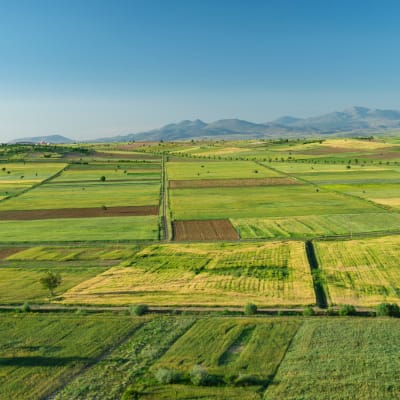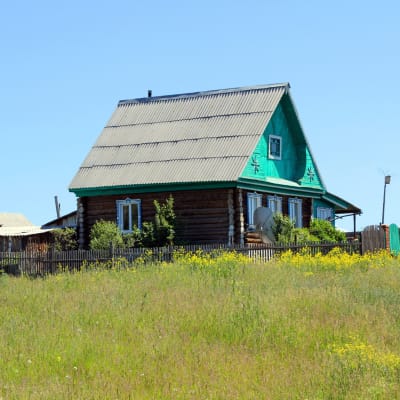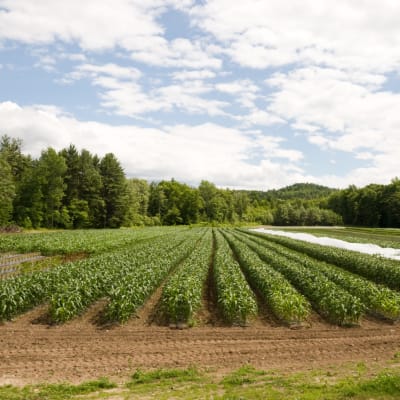Summer gardens, farmers markets and roadside produce stands all make us feel closer to the food that we are eating. Knowing exactly where the beef in our burgers or the cucumbers for last season’s pickles came from adds a little magic to something we have a tendency to take for granted. But, is it possible for personal gardens and local producers to feed us all?
The Rise of Commercial Farming
No matter how you get the food you eat, one thing is for certain—that process looks immensely different than anything we could have predicted 10,000 years ago or even 100 years ago. Imagine living in a time of the farm family and subsistence agriculture, where the only real access to food was whatever your family had growing in the yard, could trade with close neighbors or relatives or had stored from previous seasons. Imagine a time before subsistence farming where you had no home, no crop to harvest—where everything you ate came from hunting and gathering or nomadic herding.
Today, an ever-changing web of food products ensures that there is a near constant supply of easily accessible food. While many developing countries and parts of developed countries are still on the path to food security, international availability of a wide variety of goods has undoubtedly increased.
This shift away from subsistence agriculture has removed most of the regionality, dependence on growing season and unpredictability that was, for a very long time, associated with food availability. After decades of infrastructure development and cash crop production, our food supply chain has morphed from that of subsistence agriculture to a global enterprise.
The United States' Role in Global Agricultural Production
According to USDA reports, the United States is the world’s second largest agricultural trader behind the European Union. In 2022, agriculture products accounted for $196 billion in exports—more than triple the $62.8 billion recorded in 1997.
A large portion of exports are what the USDA considers high value products or HPVs—these include dairy products, meats, fruits and vegetables. These massive increases in agricultural exports have been made possible by increasing demand and elimination of trade barriers. Trade barriers to Canada and Mexico were eliminated by the North American Free Trade Agreement (NAFTA), which made it possible to quadruple exports to both of those countries.
Even the products that stay in the U.S. are destined for travel. For example, let’s consider a fan favorite—chicken. Whether it's nuggets, wings or whole birds, if you are eating chicken grown in America, there is a strong possibility that it was grown right here in Georgia, where we produce the most meat chickens of any state in the country.
Shifting Consumer Preferences
The enhanced, international market for agricultural products has offered American farmers a new outlet to impact food supply globally as well as a stronger sense of security in their ability to sell their end products. But, it is not without its problems.
From transportation shortages to trade agreements, producers are impacted by issues that arise at all levels of this intricate supply chain along with the normal risks associated with producing high volumes of cash crops or livestock like disease and natural disasters. This does not begin to cover the social and cultural challenges producers are facing as consumer intrigue and backlash grows.

Growing Concerns
Recently, the agriculture industry has been facing a new question from consumers—how do we know that our food is safe and nutritious?
Although this global food market has opened new doors for producers, consumers have begun to question whether or not they can trust the food that they are buying at the grocery store due to the high volumes being produced, the many stops it makes between the farm and the kitchen tables and the environmental impact from commercial production and transportation of agricultural products.
These concerns have paved the way for what some may consider a revolution of local eaters, subsistence farmers and homesteaders who believe that growing your own food or buying from a trusted, local producer can provide an alternative. This way you know not only where your food came from, but also exactly who grew it and how.
As the demand for a presumably higher quality food source has grown, dedicated Facebook groups, farmers markets, on-farm stores and roadside stands have steadily increased in number. Now instead of going to the grocery store and buying a steak that came from somewhere in the United States, there’s an option to buy beef from a producer 20 miles away and know exactly what the animal was fed, its breed and where it was raised—and consumers are loving it! In fact, more than $9 billion in agriculture revenue could be attributed to “local sales” of fresh and value-added products like butter and cheese in 2020.
Can we feed our country with subsistence farms only?
Within the local food movement, there are some with more drastic beliefs that locally grown food or intensive subsistence farming is the only option to ensure safety and sustainability. But, is that an option? If we wanted to, could we go back to a time of subsistence farming where global enterprise did not determine our food supply? Could we feed ourselves solely through local sales, smallholder farmers and trade? Let’s take a closer look.
Land Limitations

Estimations have been made for the amount of land needed to provide food for a single person based on nutritional need. Conservative estimates say that one person can produce enough fruits and vegetables for a year on about 3.25 acres. Now, before we go any further, let’s remember that this number does not take into account any crop losses or inopportune weather conditions—which is not uncommon when growing food.
In the United States alone, the 2022 census reported 333,287,557 people—for simplicity, we will use 333 million. If each person needed 3.25 acres to grow their own food, that would mean we would need grand total of over a billion acres of land to support entirely subsistence farming.
At first glance, this seems like it would not be a problem since the United States covers more than 2.3 billion acres. The complicated part of the equation is when you start to consider space already covered by cities, bodies of water, homes and land that is not suitable for growing food like mountains, deserts and marshes. Not to mention the decreasing amount of cropland due to soil erosion. Taking all this into account, you start to realize that the land mass that we have available to us is simply not enough for us to grow a substantial amount food supply for us all to feed ourselves without some form of commercial agriculture.
This is a theme that is echoed globally!
Making the Best Choice for You

The truth is that there is not a simple or single answer to whether or not subsistence farming is feasible. For some, growing their own food is a way of life, a passion and a sustainable practice; for others, this may not ever be an option because of time, space or ability. There are even the folks—like me—that lie somewhere in between. I grow a summer garden and love every bit of food it provides for me, my family and friends. I never shy away from an opportunity to support a local producer. But I also value the ability to walk into a grocery store and purchase the things I would not otherwise be able to enjoy.
We live in a time where food has become incredibly more accessible than it was for generations before us. We are connected to global markets from South America to Central and Western Asia simply through the food that we eat, and we are lucky to have the opportunity to make a choice between growing our own foods and buying the food provided for us by hard working farmers across the globe! Homegrown, local or commercial—the choice for your family is in your hands!
Contact Us
If you have any questions, feel free to email me at alyssa@southlandorganics.com or call 800-608-3755. Keep up with us on social media @SouthlandOrganics.
Thanks so much for reading! I hope that this blog and video can provide you with a bit of clarity when it comes to making the right decisions for your family’s food!
Sources
https://css.umich.edu/publications/factsheets/built-environment/us-cities-factsheet






